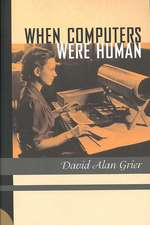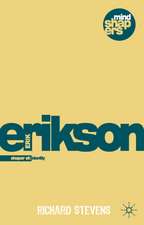Boundaries, Extents and Circulations: Space and Spatiality in Early Modern Natural Philosophy: Studies in History and Philosophy of Science, cartea 41
Editat de Koen Vermeir, Jonathan Regieren Limba Engleză Hardback – 23 sep 2016
| Toate formatele și edițiile | Preț | Express |
|---|---|---|
| Paperback (1) | 632.82 lei 39-44 zile | |
| Springer International Publishing – 16 iun 2018 | 632.82 lei 39-44 zile | |
| Hardback (1) | 643.01 lei 39-44 zile | |
| Springer International Publishing – 23 sep 2016 | 643.01 lei 39-44 zile |
Din seria Studies in History and Philosophy of Science
- 15%
 Preț: 650.19 lei
Preț: 650.19 lei - 15%
 Preț: 700.75 lei
Preț: 700.75 lei -
 Preț: 284.47 lei
Preț: 284.47 lei - 15%
 Preț: 702.24 lei
Preț: 702.24 lei -
 Preț: 389.88 lei
Preț: 389.88 lei - 18%
 Preț: 1222.94 lei
Preț: 1222.94 lei - 15%
 Preț: 647.08 lei
Preț: 647.08 lei - 15%
 Preț: 645.47 lei
Preț: 645.47 lei - 18%
 Preț: 956.33 lei
Preț: 956.33 lei - 18%
 Preț: 953.97 lei
Preț: 953.97 lei - 15%
 Preț: 646.11 lei
Preț: 646.11 lei - 15%
 Preț: 641.85 lei
Preț: 641.85 lei - 15%
 Preț: 644.49 lei
Preț: 644.49 lei - 18%
 Preț: 951.29 lei
Preț: 951.29 lei - 15%
 Preț: 647.40 lei
Preț: 647.40 lei - 18%
 Preț: 953.20 lei
Preț: 953.20 lei - 18%
 Preț: 946.87 lei
Preț: 946.87 lei - 18%
 Preț: 1384.56 lei
Preț: 1384.56 lei - 18%
 Preț: 1234.14 lei
Preț: 1234.14 lei - 15%
 Preț: 637.78 lei
Preț: 637.78 lei - 15%
 Preț: 633.53 lei
Preț: 633.53 lei - 18%
 Preț: 1219.77 lei
Preț: 1219.77 lei - 24%
 Preț: 586.95 lei
Preț: 586.95 lei - 18%
 Preț: 967.56 lei
Preț: 967.56 lei - 15%
 Preț: 641.38 lei
Preț: 641.38 lei - 15%
 Preț: 642.68 lei
Preț: 642.68 lei - 15%
 Preț: 642.03 lei
Preț: 642.03 lei - 15%
 Preț: 641.85 lei
Preț: 641.85 lei
Preț: 643.01 lei
Preț vechi: 846.06 lei
-24% Nou
Puncte Express: 965
Preț estimativ în valută:
123.04€ • 131.57$ • 102.59£
123.04€ • 131.57$ • 102.59£
Carte tipărită la comandă
Livrare economică 14-19 aprilie
Preluare comenzi: 021 569.72.76
Specificații
ISBN-13: 9783319410746
ISBN-10: 3319410741
Pagini: 290
Ilustrații: XI, 273 p. 15 illus.
Dimensiuni: 155 x 235 x 18 mm
Greutate: 0.58 kg
Ediția:1st ed. 2016
Editura: Springer International Publishing
Colecția Springer
Seria Studies in History and Philosophy of Science
Locul publicării:Cham, Switzerland
ISBN-10: 3319410741
Pagini: 290
Ilustrații: XI, 273 p. 15 illus.
Dimensiuni: 155 x 235 x 18 mm
Greutate: 0.58 kg
Ediția:1st ed. 2016
Editura: Springer International Publishing
Colecția Springer
Seria Studies in History and Philosophy of Science
Locul publicării:Cham, Switzerland
Cuprins
1. Jonathan Regier and Koen Vermeir, Boundaries, Extents and Circulations, Spatiality and the Early Modern Concept of Space. An introduction.- 2. Roger Ariew, Leibniz and the Petrifying Virtue of the Place.- 3. Vincenzo de Risi, Francesco Patrizi and the New Geometry of Space.- 4. Jean Seidengart, The Inception of the Concept of Infinite Physical Space in the Time of Copernicus and Giordano Bruno.- 5. Delphine Bellis, The Perception of Spatial Depth in Kepler’s and Descartes’ Optics.- 6. Mihnea Dobre, Experimental Cartesianism and the Problem of Space.- 7. Thibaut Maus de Rolley, Putting the Devil on the Map: Demonology and Cosmography in the Renaissance.- 8. Alessandro Scafi, All Space Will Pass Away: The Spiritual, Spaceless and Incorporeal Heaven of Valentin Weigel (1533-1588).- 9. Dana Jalobeanu, Francis Bacon’s Experimental Construction of “Space”.- 10. Luc Peterschmitt, The Circulating Structure of Space in the17th century Chemical Tradition.
Recenzii
“Book claims to set forth the variety of uses and concepts of space throughout a diversity of domains rather than propounding a linear and canonical historical narrative, it clearly fulfils its promise. … book appropriately confirms that the notion of space … was gradually called on to take, by the seventeenth century, much richer and diverse applications and meanings, and that it contributed in many ways, sometimes quite indirectly and unexpectedly, to the development of modern scientific thought and methods.” (Angela Axworthy, Metascience, January, 2018)
“This book examines changing views of space in the later end of the Renaissance and the early modern period. … This work is for scholars interested in details concerning the treated figures and subjects and is not intended for general readers. Several contributions include illustrations … . Summing Up: Recommended. Graduate students and faculty.” (J. W. Dauben, Choice, Vol. 54 (9), May, 2017)
Notă biografică
Koen Vermeir is an Associate Research Professor (CR1) in the HPS Laboratory SPHERE (UMR 7219) at the Centre national de la recherche scientifique (CNRS). As a historian and philosopher, he has contributed to a wide array of fields. His main interests are in the history of the imagination and in the interaction between religion, science and technology. Additionally, he works on historiographical and methodological topics and on science policy. He is currently a member of the Global Young Academy. After studies in theoretical physics, philosophy and history of science, in Leuven, Utrecht and Cambridge, he held research positions at the Fund of Scientific Research-Flanders, the Max-Planck-Institute for the History of Science, Harvard University, and Harvard’s Radcliffe Institute for Advanced Studies. Vermeir was visiting fellow at Cambridge University and Cornell University, and visiting professor at the ETH Zürich. Vermeir is founder of and responsible for theresearch unit Histoire culturelle et interdisciplinaire des techniques (SPHERE) ; co-responsible for the research unit Recherches interdisciplinaires en histoire et philosophe des sciences (SPHERE) ; and former founding director of LIPSS, a science studies platform at the University of Leuven (Belgium). He is currently member of the editorial board of the journals Journal for Early Modern Studies, the journal Society and Politics and the journal Artefact : Histoire & techniques, and the book series Studies in History and Philosophy of Science and International Archives of the History of Ideas. His work has been published in six different languages.
Jonathan Regier is currently a Postdoctoral Fellow at the Jockey Club Institute for Advanced Study, The Hong Kong University of Science and Technology. He is a chercheur associé with the HPS Laboratory SPHERE (UMR 7219) at the Centre National de laRecherche Scientifique (CNRS). He did his graduate work at Université Paris Diderot. His thesis and recent publications have focused on natural philosophy and the mathematization of nature during the sixteenth and seventeenth centuries. He is also pursuing research on the social integration and diffusion of new technologies.
Jonathan Regier is currently a Postdoctoral Fellow at the Jockey Club Institute for Advanced Study, The Hong Kong University of Science and Technology. He is a chercheur associé with the HPS Laboratory SPHERE (UMR 7219) at the Centre National de laRecherche Scientifique (CNRS). He did his graduate work at Université Paris Diderot. His thesis and recent publications have focused on natural philosophy and the mathematization of nature during the sixteenth and seventeenth centuries. He is also pursuing research on the social integration and diffusion of new technologies.
Textul de pe ultima copertă
This volume is an important re-evaluation of space and spatiality in the late Renaissance and early modern period. History of science has generally reduced sixteenth and seventeenth century space to a few canonical forms. This volume gives a much needed antidote. The contributing chapters examine the period’s staggering richness of spatiality: the geometrical, geographical, perceptual and elemental conceptualizations of space that abounded. The goal is to begin to reconstruct the amalgam of “spaces” which co-existed and cross-fertilized in the period’s many disciplines and visions of nature. Our volume will be a valuable resource for historians of science, philosophy and art, and for cultural and literary theorists.
Caracteristici
Opens up understanding of what space and spatiality could be and can be, and presents early modern space as a concept of enormous flexibility and centrality Broadens appreciation of how spatiality can be constructed, over and above the canonical spaces of Newtonian and relativistic physics Presents an integrative view of late Renaissance and early modern notions of space, and questions traditional historiography of the Scientific Revolution Offers a wide scope of sources, disciplines, geographical areas Offers a new perspective of canonical figures, like Kepler, Descartes, Leibniz Includes supplementary material: sn.pub/extras
















